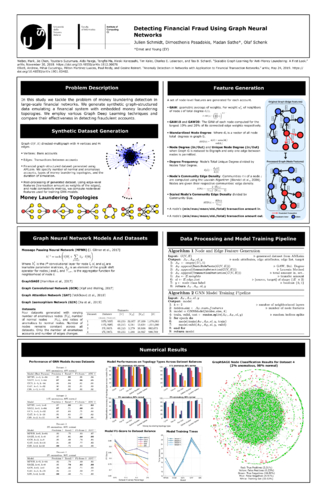Presentation

P17 - Detecting Financial Fraud with Graph Neural Networks
Presenter
DescriptionDetecting financial fraud is a challenging classification problem that entails the discovery of suspicious patterns in large-scale and time evolving data. Traditionally, financial institutions have been relying on rule-based methods to identify suspicious accounts, with such approaches becoming ineffective as the volume of transactions grows and criminal conduct gets more sophisticated. In this work, we capture in the form of directed graphs the interdependent nature of monetary transactions, with their nodes representing the financial entities involved, and their edges describing details regarding the transactions. We consider this format in both static and dynamic graph structures which mimic a time evolving financial environment. Subsequently, deep learning anomaly detection approaches are employed with the aim of separating fraudulent and benign nodes using their historical data. We consider classifiers including Graph Convolutional Networks, Graph Attention Networks, and Long-Short Term Memory Autoencoders and apply them on a wide range of artificial data that simulate the real-world behavior and complexity of monetary transactions. The accuracy and time-to-solution of our results highlight the applicability of deep learning methods in problems encountered by the financial industry.
TimeMonday, June 2611:20 - 11:50 CEST
LocationDavos
Session Chair
Event Type
Poster


